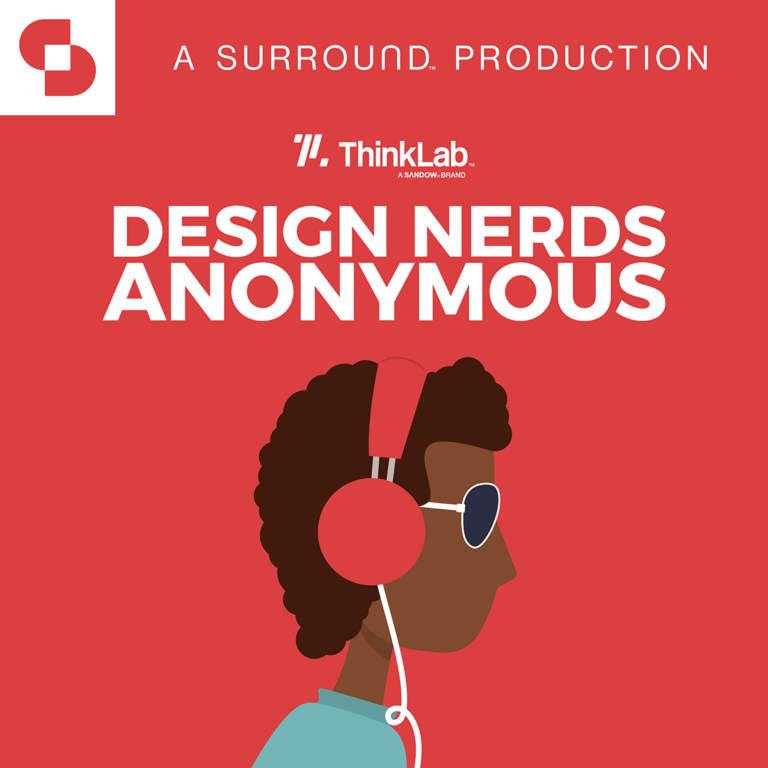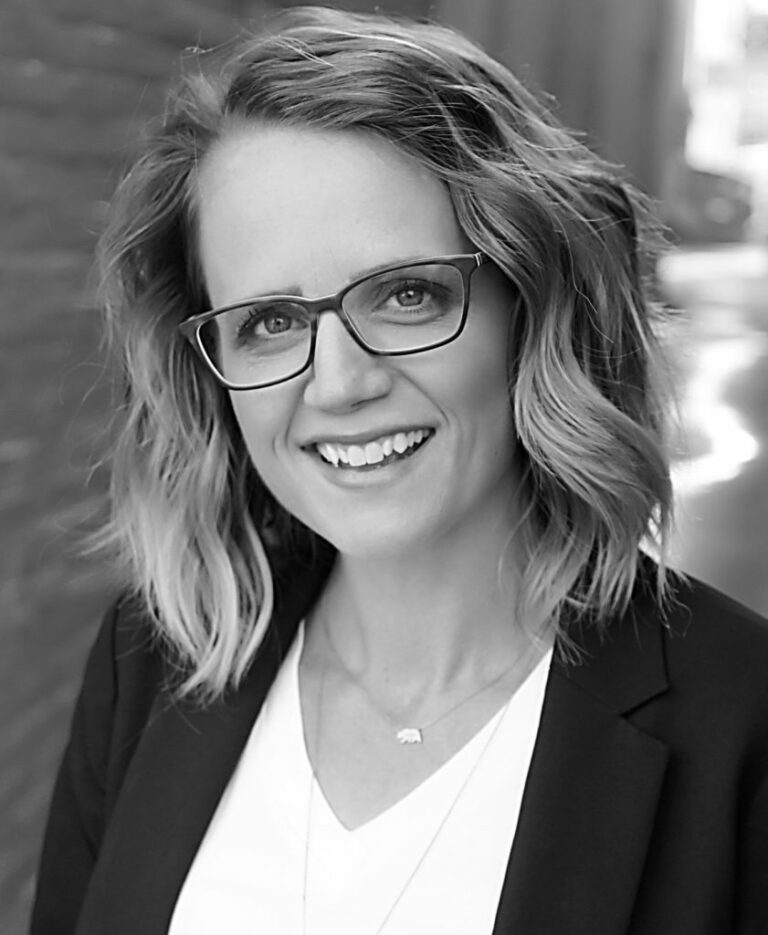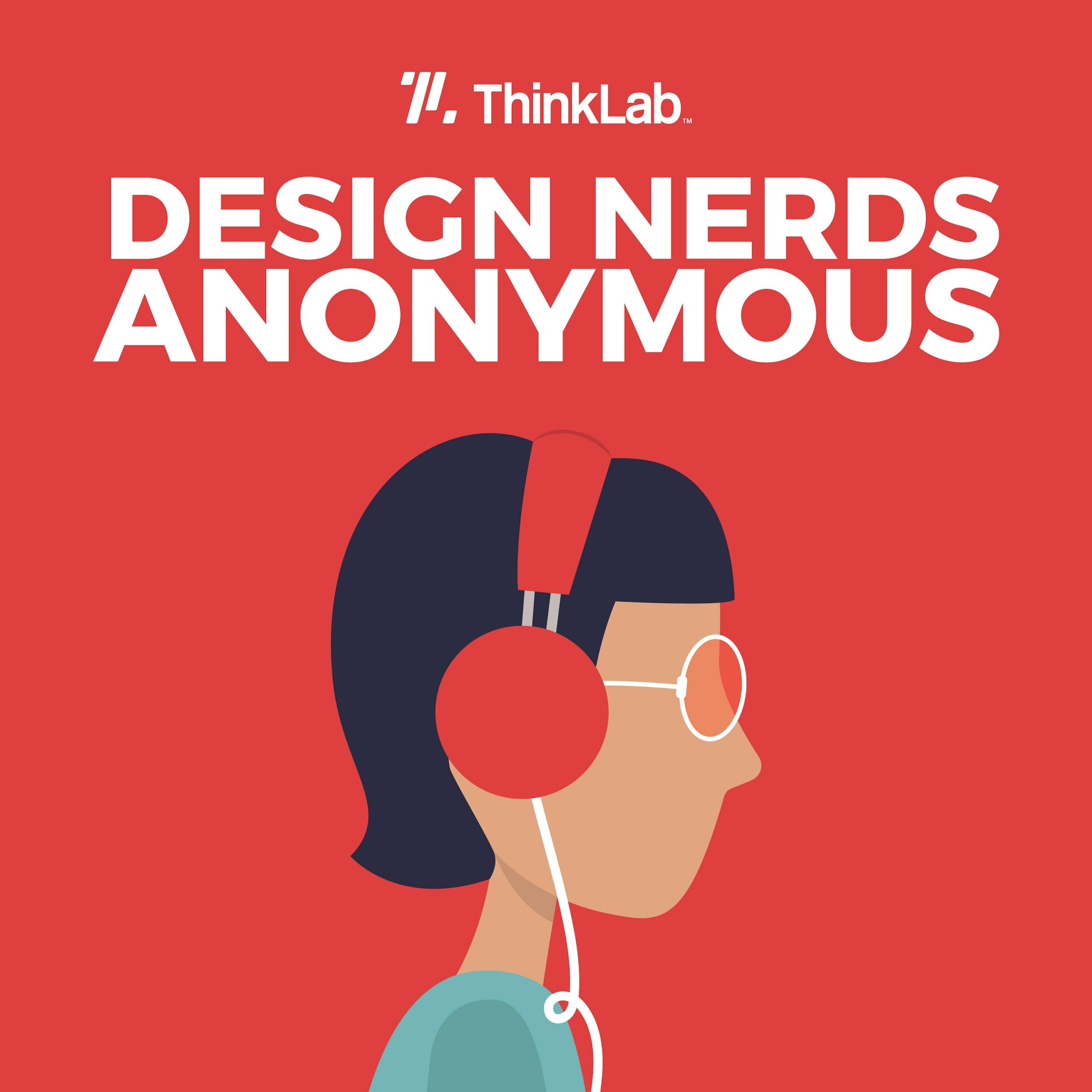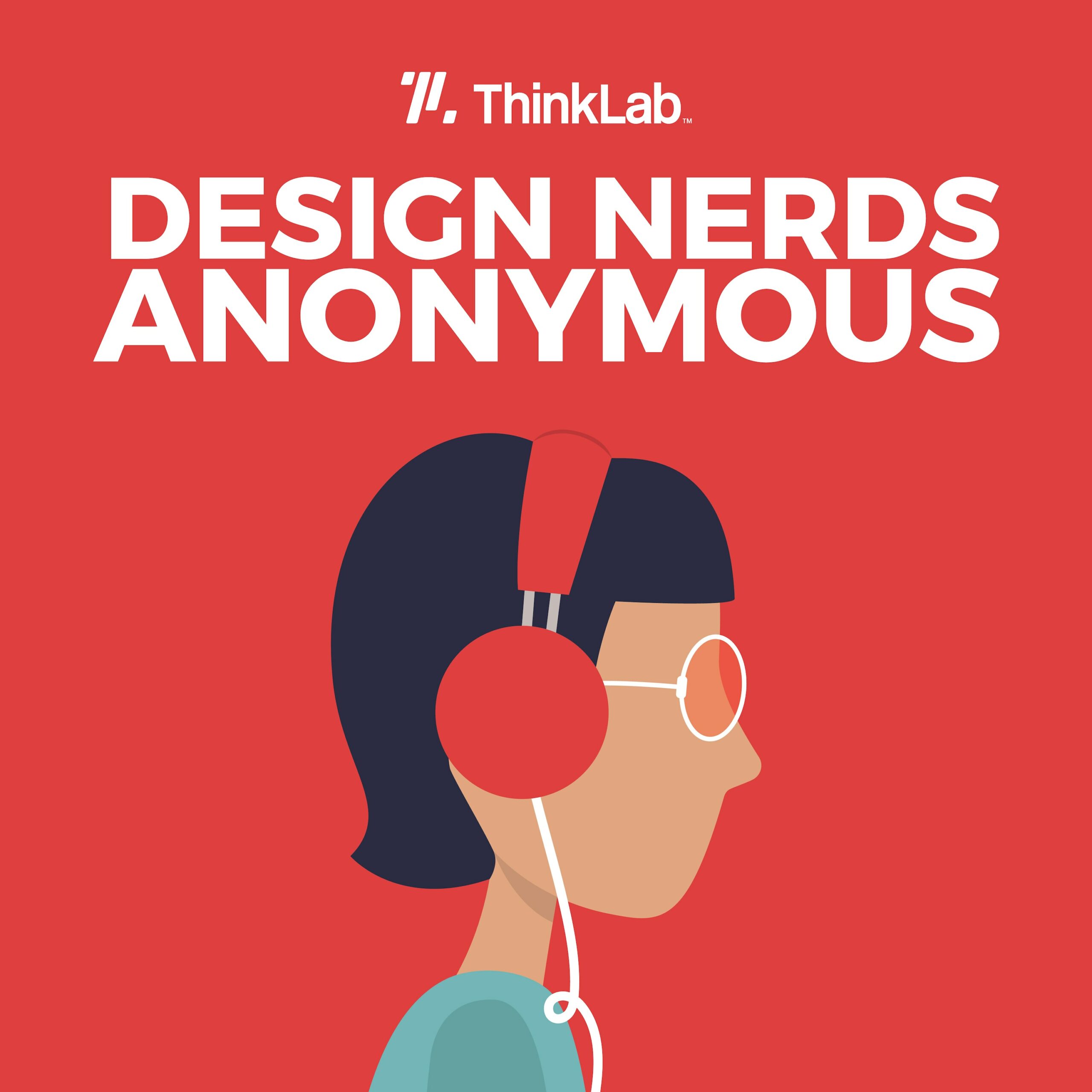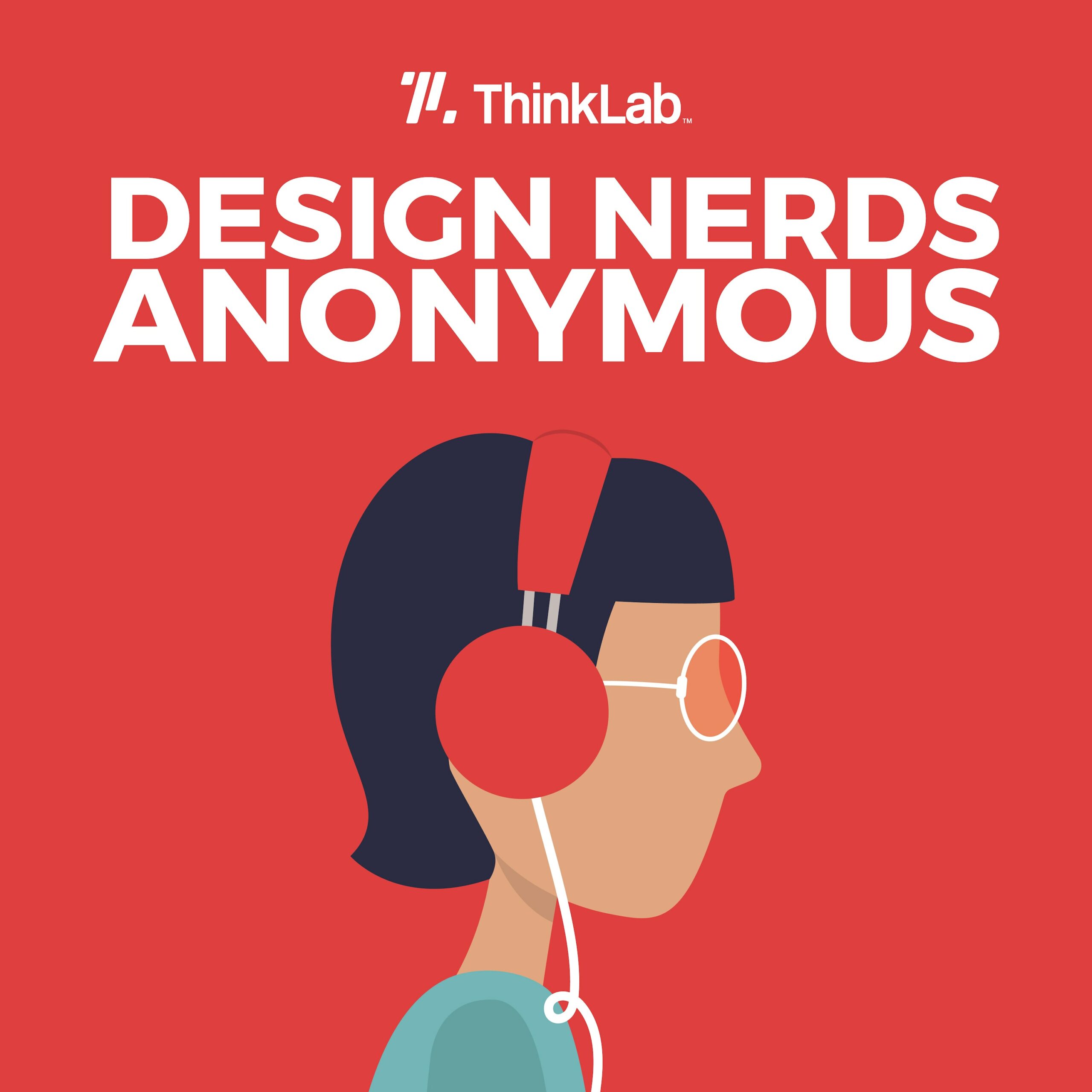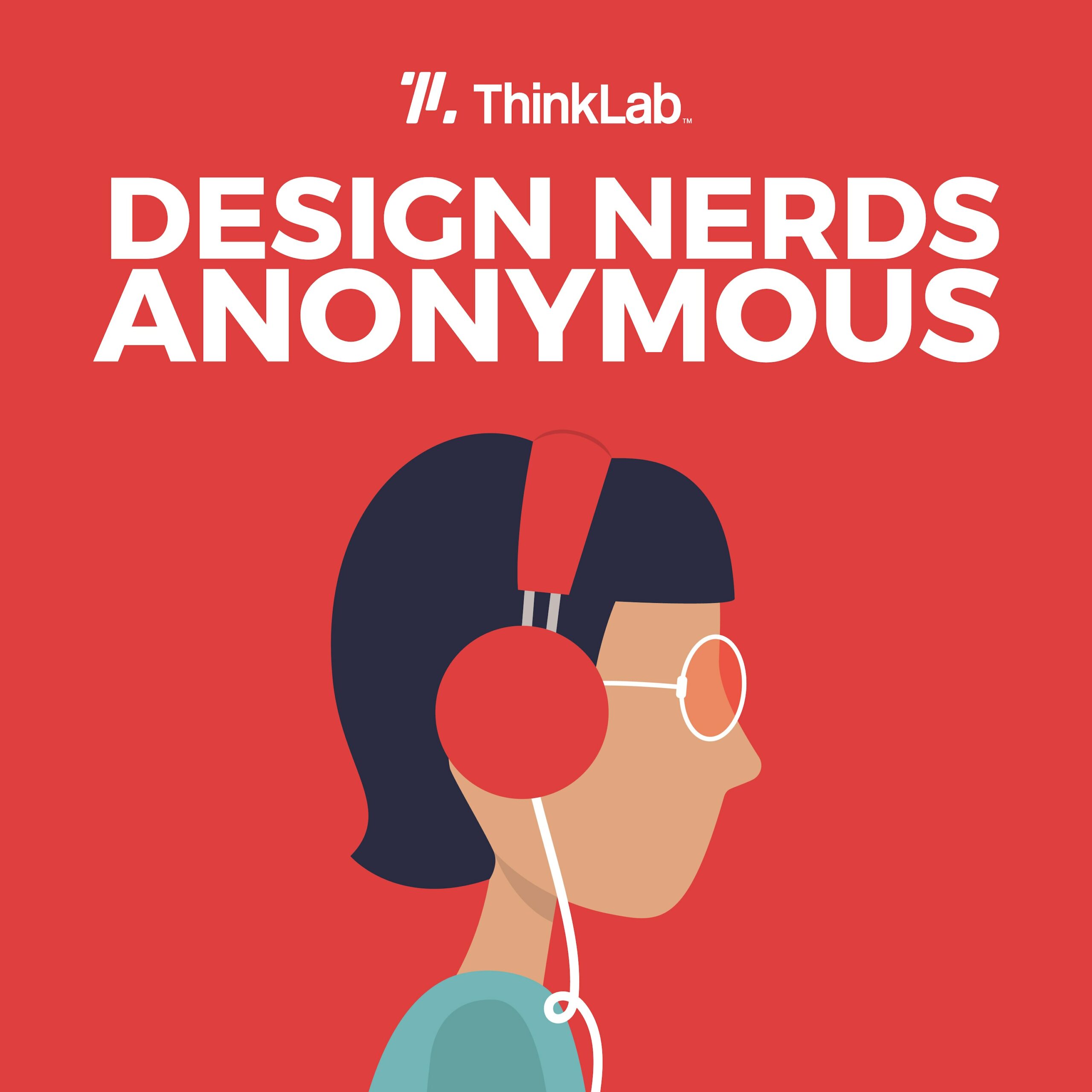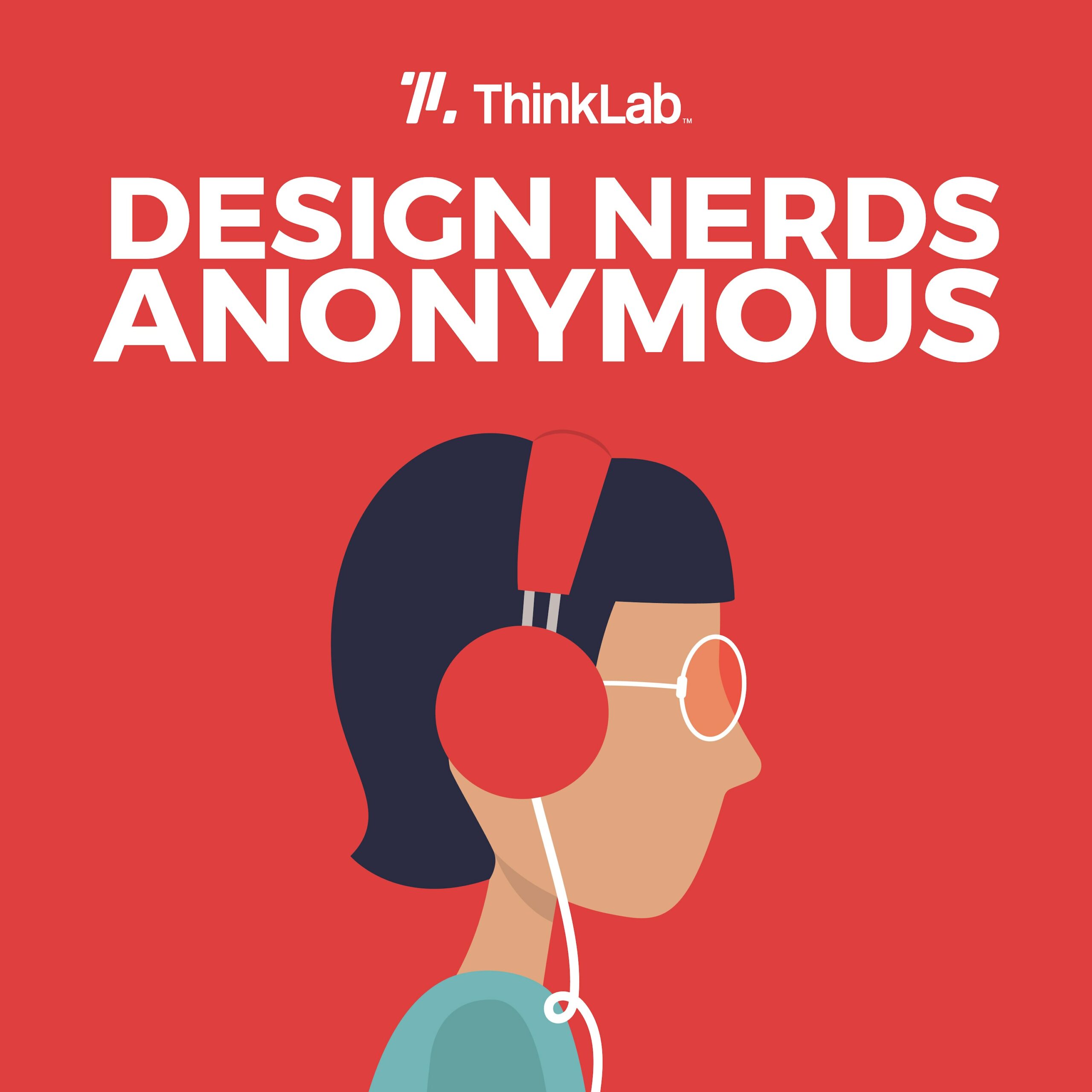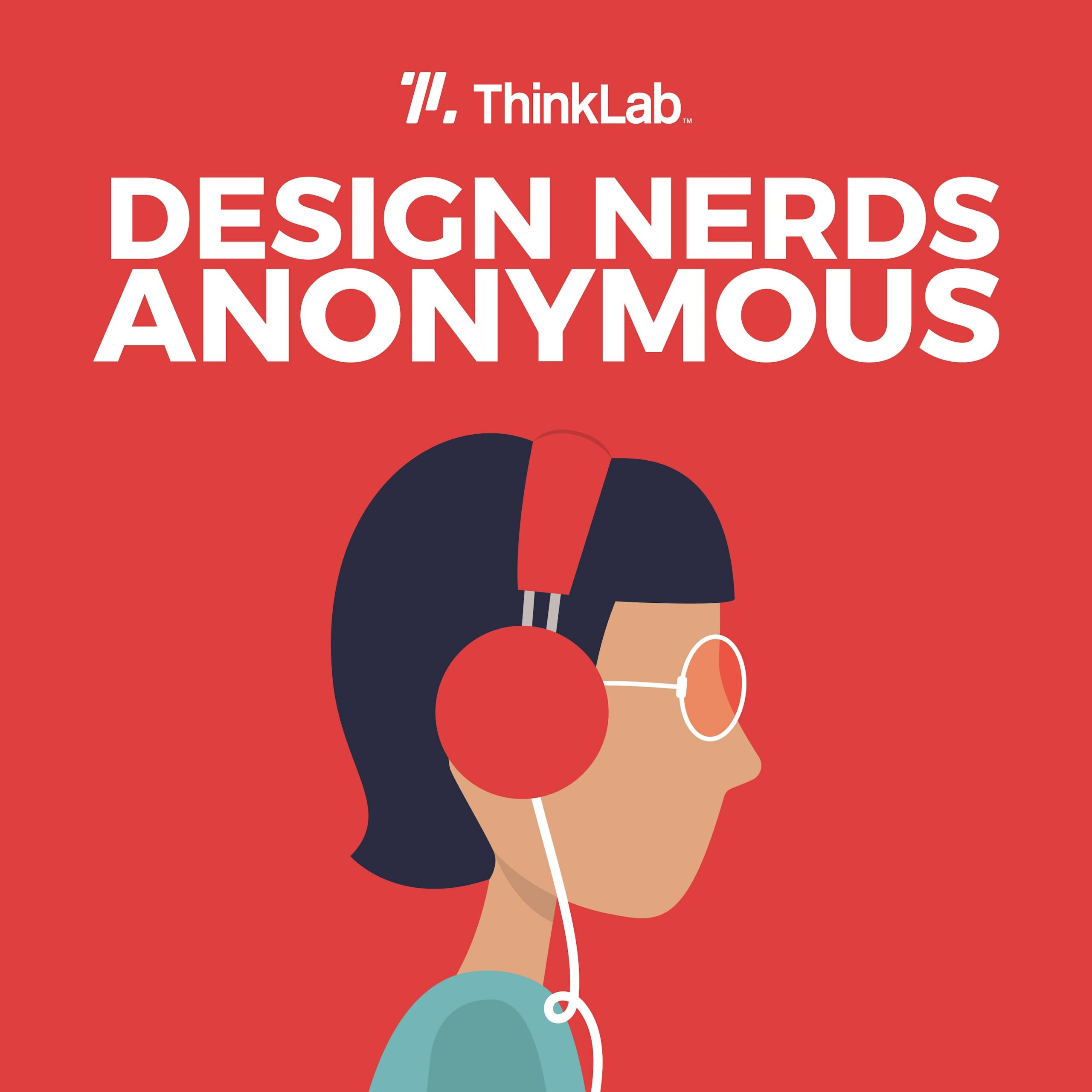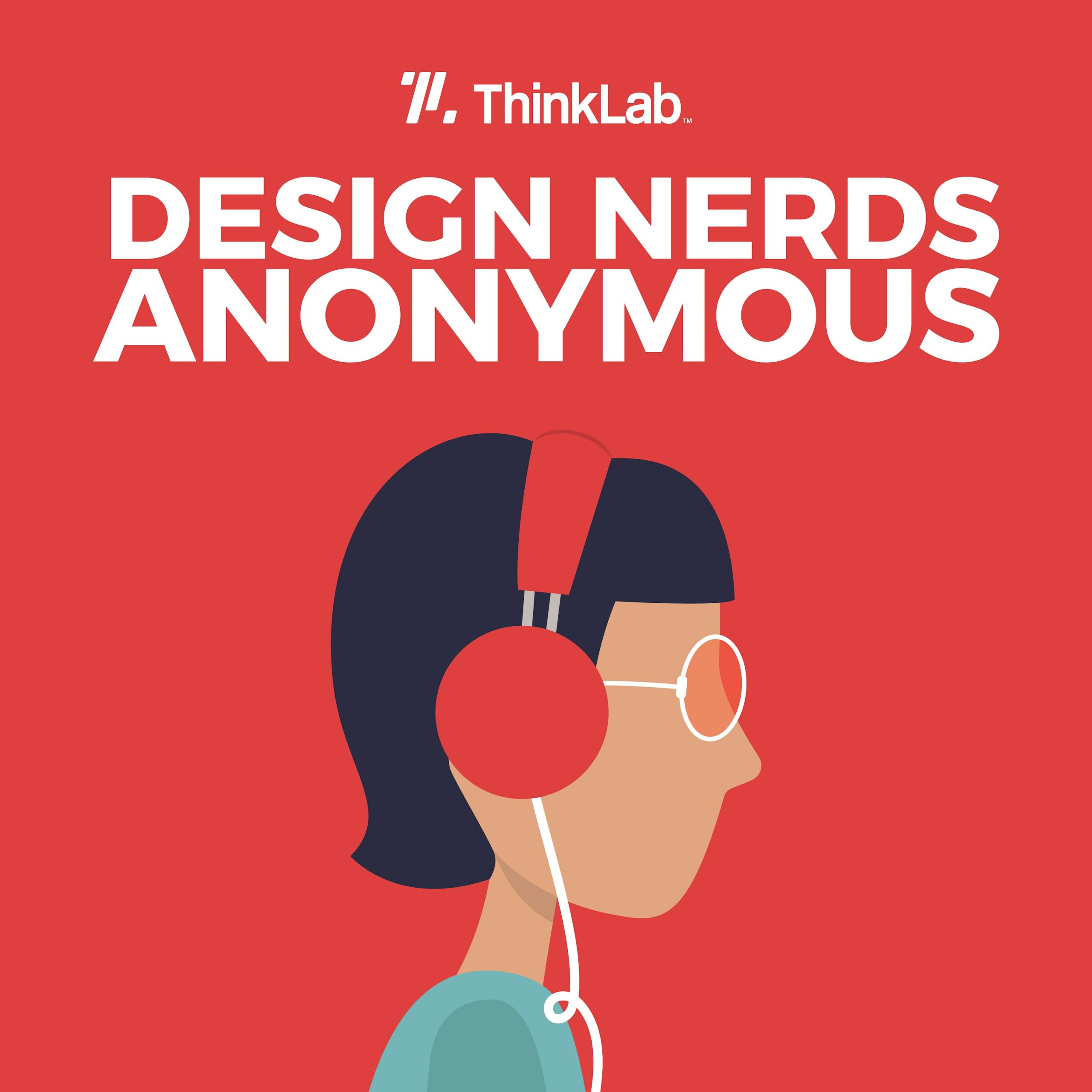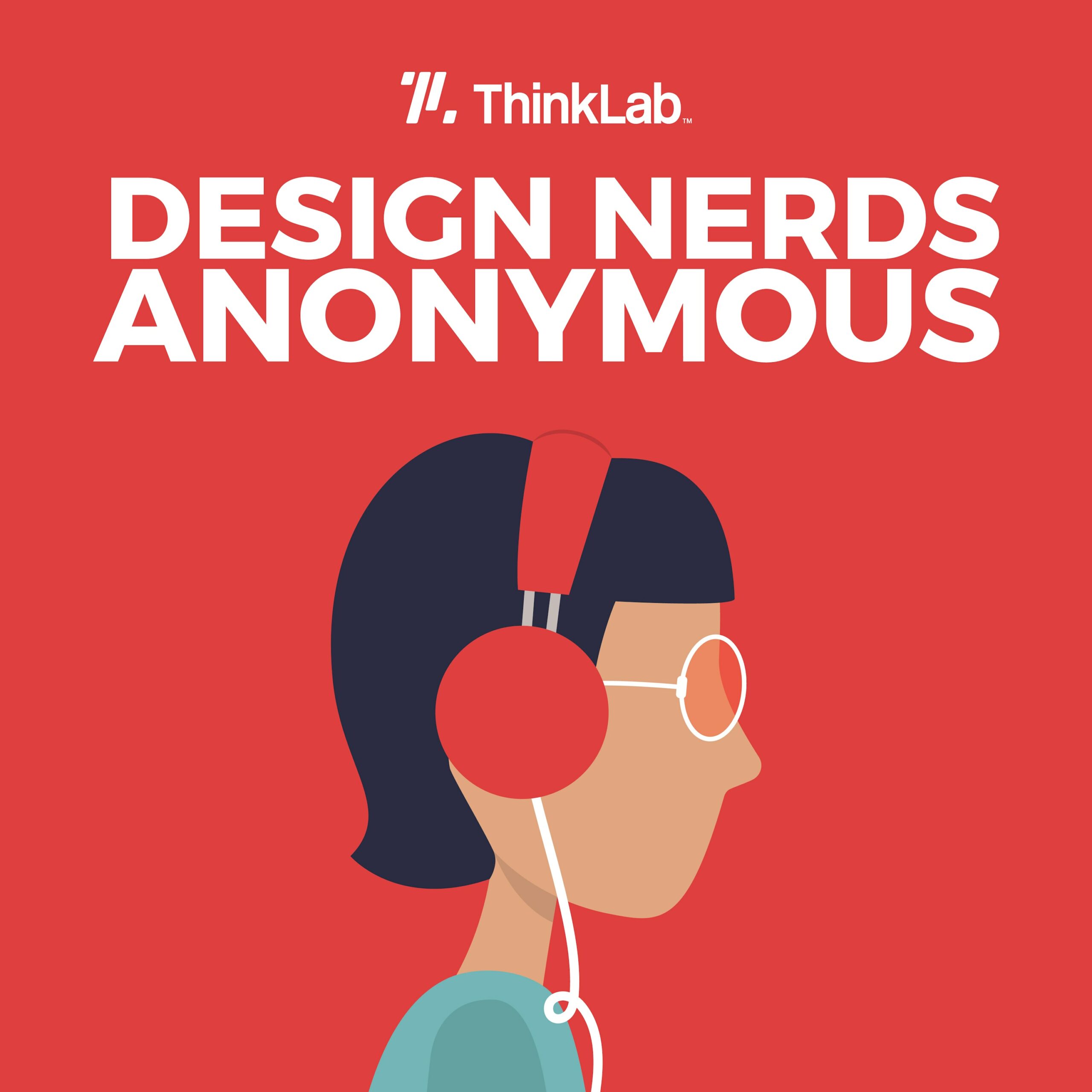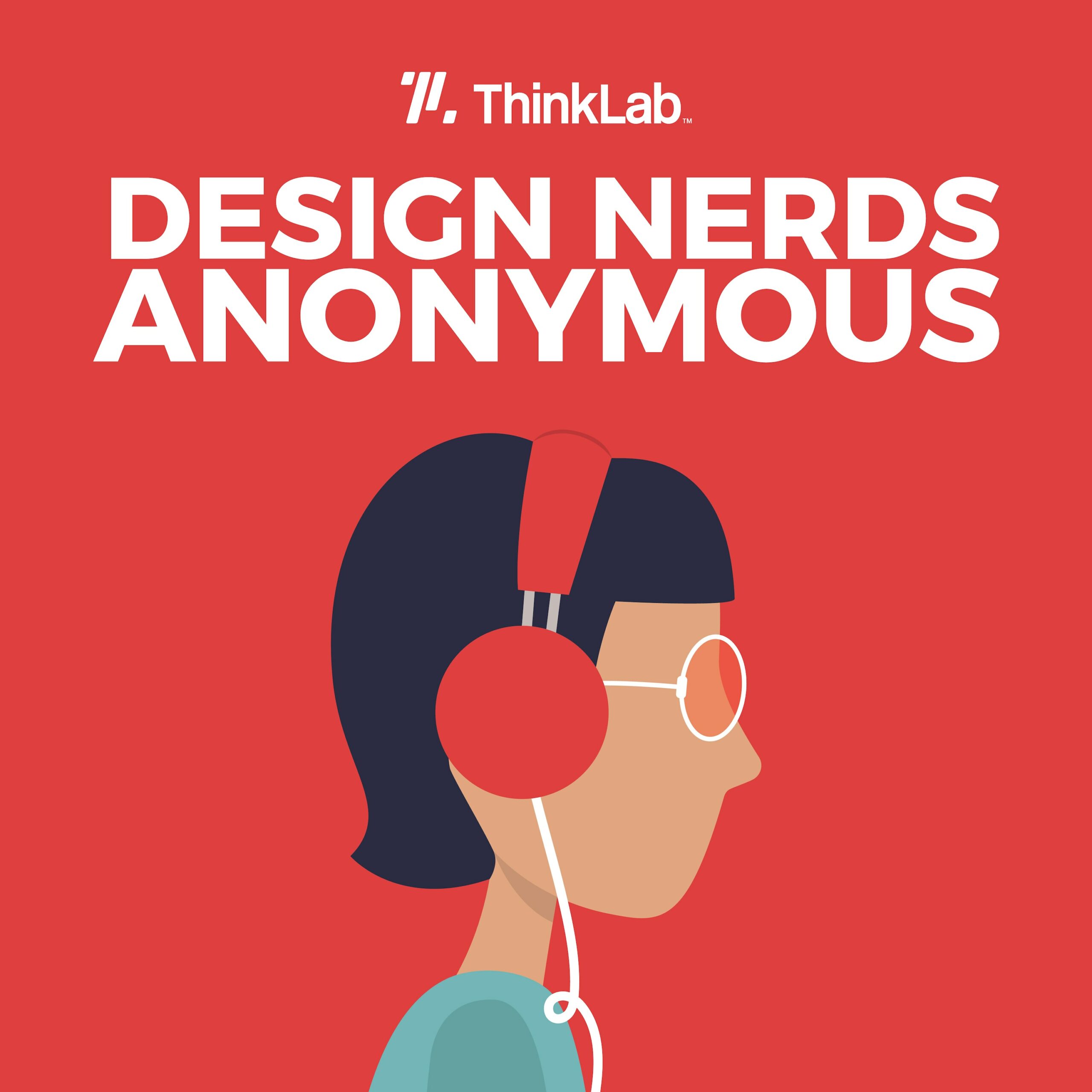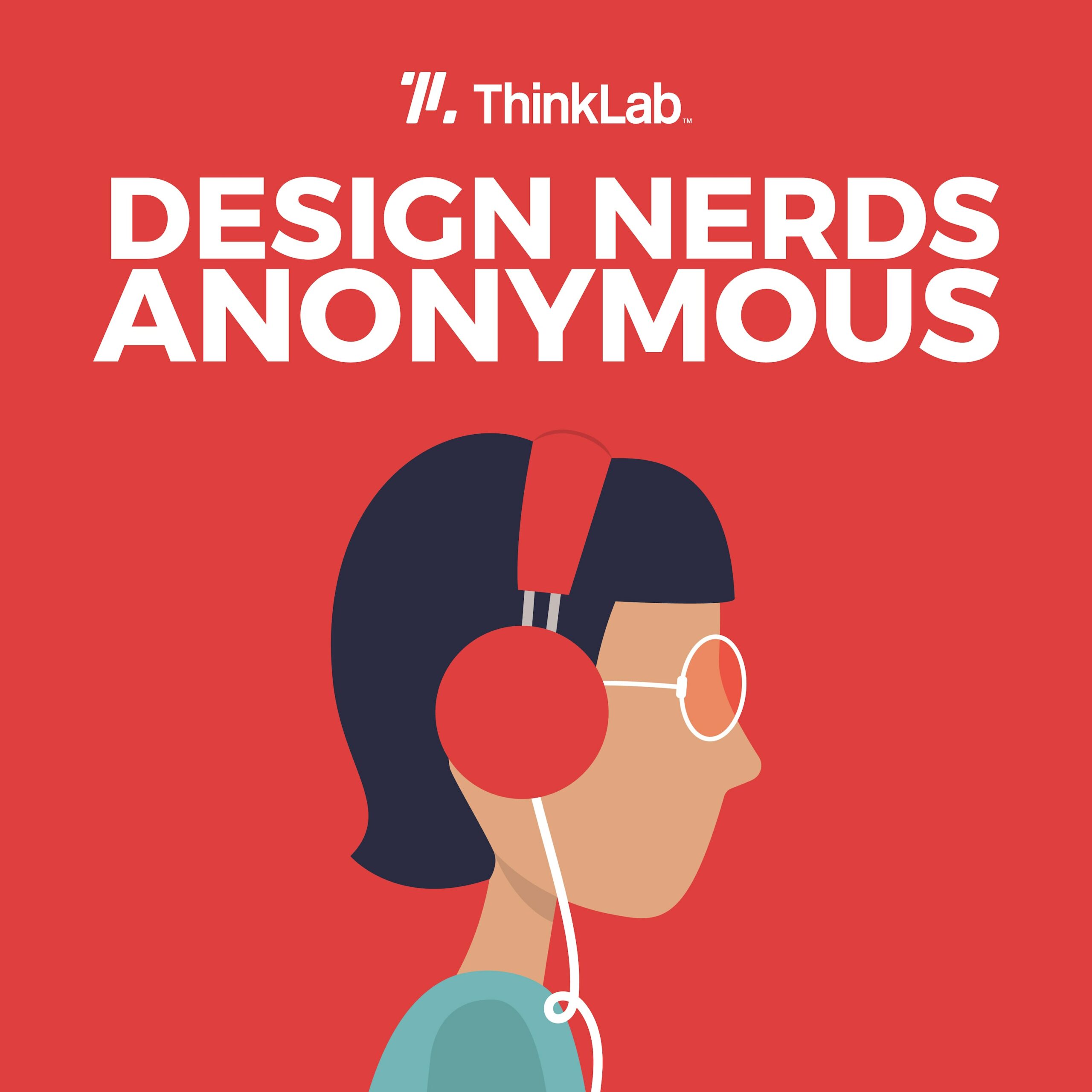In this episode, ThinkLab explores the changing landscape of events in the design industry, whether they’re digital, physical, or hybrid. Our guests each provide a unique perspective — from how manufacturers, distributors, and event producers should create events to how architects and designers should leverage them.
First, Chuck Saylor, principal at Designvox, speaks about tailoring events to the current moment so that designers will be inspired to attend in person. Marco Giberti, entrepreneur and co-author of Reinventing Live: The Always-On Future of Events, draws his experience with B2B marketing to explain how events are changing across industries. Finally, A.J. Paron, design futurist at SANDOW Design Group, shares some tactical ideas for how to adapt to the hybrid era and use events to build stronger connections between designers and manufacturers.
In this episode:
[6:00] Find out the #1 thing that compels people to attend design industry events
[8:00] Chuck discusses how creating meaningful content for a local audience can build community.
[16:10] “Disruption is happening faster than ever before. You can deny this potential disruption, or you can engage disruption and be prepared for the next generation of events.”
[19:30] Marco explains the need to develop “digital headquarters” to extend the life of physical events.
[27:48] A.J. shares 3 ways organizers can prepare to pivot their plans in the face of shifting COVID-19 restrictions.
Connect with our interviewees on LinkedIn:
This season of Design Nerds Anonymous is brought to you by Mannington Commercial, Keilhauer, theMART, and NeoCon, companies doing big things to move the design industry forward.
Download our leading-edge playbook: 100 Ways to Create a Phygital Sales and Marketing Strategy.
Finally, thanks to Hannah Viti, our audio producer, and Blue Dot Sessions for providing the music for this episode.
Episode 5: The Future of Events
Amanda: [00:00:00] The past two years have taught us three things about the future of events.
Number one: Planners and attendees alike are anxiously awaiting for more, more normal, more frequent in-person events to come back in some form. Number two: Looking back to pre-pandemic times, most people will agree that the value of face-to-face interactions were taken for granted. Number three: As you’ll hear from our guest on this episode — Marco Giberti, author of the book Reinventing Live — the event industry itself was already ripe for a change.
Marco: Disruption is happening faster than ever before. You can deny this potential disruption, or you can engage disruption and be prepared for the next [00:01:00] generation of events.
Amanda: So throughout this episode, we’ll challenge ourselves to understand what those changes will be, and then apply them to the design industry. From trade shows to small, intimate, local events with reps, ThinkLab’s spent the last six months exploring the future of product specification. And we used our findings to develop season three of this podcast.
In each episode, you’ll hear us tackle one key challenge from our research. Now this episode consists of three chapters. Each provides a unique lens to inspire the future of events within the design industry — from how manufacturers, distributors, and event producers should create them to how architects and designers should leverage them.
In chapter one, you’ll hear from Chuck Saylor, furniture industry legend, industrial designer, founder of furniture company Izzy+, and current employee [00:02:00] of Designvox. We’ll hear more about his research with several industry organizations around some of our industry’s cornerstone events. In chapter two, we’ll hear more from Marco Giberti, who you heard from just moments ago. And in chapter three, you’ll hear from A.J. Paron, SVP and design futurist of our parent company, SANDOW Design Group, about how SANDOW is making many of these concepts a reality, as we look to our own future of events.
Welcome to season three of Design Nerds Anonymous, the podcast that sparks curiosity at the intersection of business and design. I’m your host, Amanda Schneider, founder and president at ThinkLab, the research division of SANDOW Design Group and sister company to media brands you know and love, like Interior Design, Metropolis, Luxe, and more. At ThinkLab, our passion is sharing inspiration for [00:03:00] your business, fuel for your design process, and connections with people and ideas for positive disruption. Thanks for listening. We’re glad you’re here.
So let’s dive into chapter one. Our first interviewee, and assistant to setting up this challenge for our industry, is:
Chuck: I’m Chuck Saylor. I currently am a principal at a strategic planning and human-centered design business called Designvox in Grand Rapids, Michigan. And prior to that, I spent most of my life and my career inside the contract furniture industry. In 1972, getting out of school, I had the great fortune of finding this industry in its infancy, and I have been deeply involved in it through design development, strategic planning, and marketing, all the way to starting a business called Izzy Design in 2000.
I decided to name it after Isabella — Izzy, my [00:04:00] granddaughter — because we wanted to emphasize the future. I was really impressed by trying to figure out what would she be doing 25 years into the future. How would work look for her? How are we doing building a future for the next generation? Not the finite short-term but, what are we adding to the dialogue? What are we adding to the product? What are we adding to opportunities to make the future a better place for people? And all of it’s been really driven by my own personal passion, around the importance of people in our lives and trying to figure out how can we solve problems for people in a work environment.
I think it’s important to remind, remind ourselves that everything that we do from a product design standpoint, marketing, it’s all for other people. It’s all for the betterment of people. The reality is that everything that we are creating is for someone else to use.
Amanda: One of the [00:05:00] things that fascinated us about Chuck is that in addition to studying change his whole career, he partnered with several industry players on research around events in the design industry. And I’m excited to unpack some of the findings. Now, some of it won’t surprise you, but then again, some of it might. First up, number one: the research said the most important aspect of these events was connecting with other people.
Chuck: As it relates to events, there are a number of things about connecting the dots that show up. And one piece of research that, um, we did some years ago for BIFMA, in regards to events like NeoCon and other major events on a global basis, we researched globally: What are people expecting from events? And people got very excited about a number of topics, but the most important aspect was “being together with people [00:06:00] I care about, I like, I don’t get to see very often.” It was the camaraderie and the social aspect of events.
Amanda: Number two: The second takeaway — again not surprising, but accelerated by the pandemic-related change — is that our motivations to attend events have changed. We want to learn from others, but now it’s more about getting things we can’t get from home in our house slippers. It’s about being exposed to other people, cultures, products, experiences, and ideas that we may not have in our daily life.
Chuck: If there is a cultural aspect of an event that is influential, can I touch and feel a very diverse audience in a very diverse environment, with diverse culture around me — if I can learn from all of that, that is much more fulfilling as well. So learning becomes a, a big component, and learning together is really, really important, like we’re [00:07:00] experiencing.
Amanda: Number three: It’s about the quality of the content, but it’s also about the delivery of that content, including how and by whom.
Chuck: One of the most exciting aspects of technology is that we can now communicate with each other in a much more real-time and meaningful way. And I would much rather have a conversation with you live and in person than reading something that you would send to me, as an example. And I think that we haven’t seen the influence of that content development and film at the transactional level of business. And I’m talking to people about, what does the sales force of the future look like? And they may not look a lot like what they look like today.
And technology is definitely going to play an incredibly important part of that, in some cases, I think already. Creating short-term video producers out in the marketplace on a regional and local level — connecting with what I would say is the other big issue out there, which is community. [00:08:00]
Building community is absolutely at the, at the local level going to be really empowering. And what are the tools to do that? The historic lunch-and-learns with the A&D community? Not everybody has the time or the ability to do that, but creating meaningful content, short-form videos with meaningful information at the local level, where I’m pushing it out to my community and just my community at a local level — because that’s where the rubber meets the road there.
From a distance, we can understand what’s happening in Des Moines, Iowa, or even in San Francisco. And the reality is you can get a sense of it, but it’s not the same as if you live in San Francisco. What does the community there need, and how do I deliver that to that community? So it’s building great content, building community, as a result of it.
Technology now has given us the ability. Now, from a human-centered standpoint, [00:09:00] we need to teach people how to do that effectively and how to become the creators. We have this giant, giant marketing opportunity in this industry, and it’s made up of the thousands of people who have feet on the street, trying to historically sell furniture the way they did 20 years ago. The future is going to be a much different look at how we distribute and sell product in my opinion.
Think differently. Take a fresh perspective on everything. People want a really special experience. So, what does that experience entail? There is a formula, I think, starting to emerge, and we just need to put our hearts and minds to it, because it’s focused on: How do I make people have better information, be more informed? But more importantly, how do I solve the problems that they’re facing?
That’s the name of the game for the [00:10:00] future. Get really focused on the needs of the people that we’re trying to serve. And technology is going to allow us better and better ways of doing that. Special events are going to allow that. I think short videos allow us to communicate in a totally different and very personal way, so that when we do come together as people, it isn’t like going and sitting for 45 minutes and just having one-way communication. That to me is not what the future is about.
Amanda: So as we dive into the future with a little outside-the-industry inspiration, I want to welcome our guest for chapter two.
Marco: My name is Marco Giberti. I’m originally from Argentina, from an Italian family, and living in the U.S. for almost 20 years.
Amanda: Marco is one of the co-authors of Reinventing Live: The Always-On Future of Events. This is a book and practical guide for anyone participating in the live events industry. It tackles the change, innovation, and disruption that’s occurring [00:11:00] across the events industry. Here’s a bit more background to give you an idea of the immense credibility that Marco brings to this topic.
Marco: I started my career with Apple, and part of my job with Apple was running marketing and, as part of marketing, events. And I immediately connected with events as an amazing marketing tool. And I realized early in my career that I was not a corporate person. And I was always dreaming with my own ideas, and I quit Apple to start my own ventures. And I started three companies in three different verticals from scratch to exit: a B2B media company, a live events company (mostly trade shows and B2B conferences), and an e-commerce venture. And those three ventures as I said, we started from scratch up to strategic buyer acquires.
Amanda: In addition, he spent 12 years running a portfolio of B2B trade shows and conferences across different industries and different countries.[00:12:00]
Marco: When I exited that business, I was in my early forties, and I promised my wife and kids that I would never be a CEO of a startup again. And I kept my promise. I started Vesuvio Ventures, where I basically invest time and sometimes money on early-stage technology startups around B2B media technology, live events technology, marketing technology, and education technology.
As you can imagine, during the pandemic, we had an amazing time about digital engagement on so many levels. And that was the main reason for us to write our book Reinventing Live, because when the whole pandemic started, we immediately realized that this could finally change some categories, [including] events.
Amanda: But even if you’re not an event producer, as Marco says:
Marco: We all participate at events as a visitor, as a buyer, as an exhibitor or a seller, as a speaker.
Amanda: So I want to challenge you, regardless of which of those roles you play when it comes to design industry [00:13:00] events, to listen on and ask yourself: How should we be demanding more of our industry’s events? What would make them more effective to you or more worth your time to attend? According to Bizzabo, pre-pandemic, 61% of marketers believed that in-person events were the most critical marketing channel — a 20% increase from the previous year. Yet more than half of marketers express difficulty in proving ROI.
While we will continue to explore the balance of in-person to virtual, one thing we have learned over the past year or so is that nothing compares to the value of face-to-face interactions.
Marco: Events are usually a very important part of our B2B marketing tools and channels, all the ways to educate ourselves and stay relevant in the industry, or meet with prospective buyers or sellers, or engage with [00:14:00] new or existing relationships and keep building trust and potential business opportunities.
And if you talk with B2B marketing people, they will realize that events is one of the most effective marketing channels, but also one of the most difficult channels, because it’s very difficult to measure. It takes a lot of money, a lot of energy and time, from their teams. And they usually have this love-hate relationship where they go to trade shows or conferences, they realize how powerful the opportunity is. But after that, they have a hard time following that and squeezing value from that investment.
And this is, this is not new. This is happening for hundreds of years.
Amanda: Trade shows have not changed, basically since their inception. Their relative analog success means that there was no motivation to change. But Marco challenges us that the frustration around lack of ROI was already there.
Marco: Trade shows as an industry is 800 [00:15:00] years old, believe it or not, and it was one of the first marketing tools. Which means the challenge is that events were successful, the business model was successful, hundreds of years ago, and the changes were minimum during the last couple of hundred years. It was basically real estate: You go there, you meet buyers and sellers, serendipity happens, and life is beautiful — and they go back to real life again. Which means the frustration was in some way there in terms of maximizing the opportunity.
Again, when COVID hit, that frustration changed [to]: We’re not able to meet face-to-face. We need to meet digital. We don’t know how the hell we should be doing this. It’s super boring. It’s not easy to engage. And we’re having a hard time. That was during the early days. After that, we started learning in different, different ways.
But in perspective, the book is about sharing our own ideas with every single stakeholder: buyer, seller, exhibitor, visitor, [00:16:00] speaker, venues, vendors, technology companies, every single stakeholder around the industry. And the key message is this industry was ready for disruption.
Disruption is happening faster than ever before. You can deny this potential disruption, or you can engage disruption and be prepared for the next generation of events.
Amanda: But as we prepare for the next generation, I want to emphasize, as the book does, that digital is not a direct replacement for our face-to-face interactions. Rather, it should be explored as a component to enhance, streamline, and make the most of our in-person interactions moving forward.
Marco: Every single serious [person] that we discuss the book topic — and these are private equity investors, strategic corporations, founders, technology companies — everyone realized that it’s extremely difficult to replace the [00:17:00] face-to-face, the human connection.
People realize that virtual events are going to stay, and they’re going to play a different role in comparison with pre-COVID. But also people realize that face-to-face is not going away. And if you put those two things together, what you’re going to realize is that the events opportunity — digital, hybrid, or first phase — is going to be bigger than ever.
I believe that we all need to rethink which specific topics must be done face-to-face. And which specific topics could and should be done in a digital way because it’s more efficient. And because I will save time, and I will not jump on a plane for a meeting and impact the environment, or many things like that that are going to be more and more relevant in the future. Which means the invitation is to rethink which specific topics must be done face-to-face because it’s almost impossible to replace, but how can we leverage digital in a way that is more efficient, and [00:18:00] also our face-to-face interactions are going to be better because of digital?
Amanda: And as an investor, Marco shares how he’s looking at the future of digital.
Marco: For the events industry, digital represented less than 2 percent before COVID. Digital revenue is every single digital activation that is not happening as part of the face-to-face interaction inside the event. Less than 2 percent. This is a multitrillion business. It was not a small number, but it was marginal.
If you talk now with the biggest event organizers — public companies or private equity companies — they’re all saying that they need to be at least 15 to 25 percent digital revenue in the next three years. Which means we’re talking about billions and billions of dollars moving from a traditional sponsorship inside a Vegas convention center into something that we still don’t know how it’s going to look. But every single exhibitor and visitor will pay more attention to those [00:19:00] digital activations and opportunities. And because of that, we’re going to learn different ways to connect and do business that were very difficult to imagine before COVID.
Amanda: But Marco has some advice to us that should be easy to correlate as we connect events to other concepts we’re discussing as an industry. Number one: Think about physical and digital event headquarters.
Marco: I’ll try to keep it as simple as possible. I heard the other day a fantastic phrase from Marc Benioff, Salesforce founder and CEO.
He was talking about the way that they think about their offices for the future. He was saying, I want to have fantastic physical headquarters, but now I realize that we also need digital headquarters. And if you think from an event perspective, it’s exactly the same. Event organizers would need to think on their physical headquarters, which means the trade show or conference in Vegas at a cool [00:20:00] venue that is going to be fun, is going to be an education opportunity, a networking and commerce opportunity. And that’s going to happen in some way pretty similar to what happened in the past, but now they also need to build the digital headquarters for events.
And the digital headquarters is probably going to stay open all year long, and it’s going to be different. And it’s going to generate data and engagement, education opportunities, all year long. And at some point, those opportunities will move from digital to face-to-face.
Amanda: Number two: Make sure your digital relationship is deeper than Tinder.
Marco: I honestly believe that you build trust face-to-face. Commerce is based on trust. Which means if you’re a B2B animal like me, you want to be sure that you spend face-to-face time with people, you trust that people, that company, and after that, you do business and you build a long-term relationship.
Replacing those components on a digital basis — it’s not easy. I keep joking [00:21:00] about the difference between a real relationship and a Tinder relationship. Tinder could be a lead generation opportunity, but the real relationship will happen face-to-face.
B2B is pretty similar. We can have a meeting like this. We can start the conversation. I can learn about you. You can learn about my background. We can engage on, on a, on a conversation like this, but probably the next step is going to have a physical meeting. I want to see your product. I want to experiment [with] the product. I want to understand how reliable is your company, blah, blah, blah. And after that, we’re probably going to look fine. And after that, we’re going to start a real business relationship.
And all of those things are different stages, and from a marketing perspective, different investments and different ways to maximize your company time and money. And I think that we learned a lot and, and we are going to be able to leverage digital in a way that was unthinkable before COVID.
Amanda: Number three: Content is king, but marketing is queen. [00:22:00]
Marco: I was talking about the OOO idea — offline, online, offline — — concept for almost a decade.
Amanda: This is the idea of — through effective marketing — creating a journey for your buyers that seamlessly integrates your online channels with your offline or in-person experiences. Whether we’re talking about trade shows, events, product presentations, showroom tours, or any other topics that we’re exploring this season, the idea holds as a key to designing our future client experiences.
Marco: And I was talking with many industry CEOs and very senior people, and everyone was saying, “Makes a lot of sense. We’re moving there, we’re going there, but you know what? It’s too complicated. I don’t need to do it now. Life is beautiful. Margins are great. We’re growing like never before” — this is all pre-COVID, of course — “Why the hell should I complicate my life into a digital platform or the B2B marketplace or stuff like that if my events are doing great?”
And, you [00:23:00] know, the industry was in pretty good shape, which means — — now it’s a different story. Now there is pressure coming from all angles, pressure coming from visitors. You don’t want to go to Vegas for four days without understanding if the education is going to be critical. Or I can do something online and learn if the meetings are going to be there, and how deep and productive are going to be those meetings. And if the overall experience and return of investment of your time and money is going to be productive. Which means the expectations from the visitor, the buyer, are going to be way higher before jumping on a plane and, you know, spending three or four days or a week across the world for some specific event.
The expectation from sellers, exhibitors, are also going to be very different and higher, because they really want to understand how much time and money they need to deploy on that particular event activation. The whole understanding of the opportunity is changing dramatically.
Amanda: So as we [00:24:00] translate event industry change to tangible tactics for the design industry, let’s dive in to chapter three. I’ve invited my SANDOW Design Group co-worker back to Design Nerds Anonymous. Under her umbrella of responsibilities includes events for SANDOW Design Group, who, like you, has been forced to drive new thinking in the world of events. Here’s A.J.
A.J.: I’m A.J. Paron. I’m executive vice president at SANDOW Design Group and design futurist. We’ve been studying this quite closely, because obviously we do have quite a few both live and virtual events that we offer to the design community.
It’s an interesting process, because we have seen a deep need for people to want to reconnect in person and to have the dinner conversations and all the fun pre-pandemic. But on the other side, there’s a huge convenience of having on-demand events, where I can click into and be a part of something without [00:25:00] traveling, without exposing myself to potential harm, without having to spend the type of dollars that I would’ve had to spend to get the exact same content. We’ve talked a lot about the digital world and the physical world, and the hybrid experience is different, but the content is sort of the same. It comes down to what is going to be different about that experience that I’m going to be willing to travel, to pay money, to take time off of work, to not easily fit it in my schedule.
Everyone’s looking at, what’s the line people are willing to cross, in order to jump on that plane and be willing to go. The composition of where that line is is different for every person.
Amanda: So as we look to create events — either digitally, in person, or some hybrid mix — A.J. challenges us with these tactical ideas that are working for us, one of the leading event-hosting entities in the design industry. Number one: [00:26:00] Flip the flow.
A.J.: And I’ve seen it done a couple of different ways where people try and build a digital community and then tack on live events. But that’s really actually quite hard. We’re trying to build a digital community or an essence of an event, but it’s virtual and you just don’t get to the same deep level that you do when you do in person. And so we’re actually exploring the opposite of that: Let’s have an event. Let’s get together in person, make these connections. Now, when everyone has a relationship, it’s much easier to take that relationship and spur that on a yearlong journey on a digital platform. It’s much harder to do the reverse. It doesn’t mean that you can’t build relationships digitally. It’s just different, and it takes longer. And it’s a different experience that your body and your psyche go under.
Amanda: Number two: Seek new sources for inspiration.
A.J.: Design cannot thrive in an echo chamber. And [00:27:00] many times in our industry, we’re all looking at what each other’s doing, but we’re not looking outside the industry. And that is critical at this moment. My team is talking to people that are working on huge events in Doha and big events like the Olympics, and yet small, almost TED-like events for very specific industries — not our industry, other industries — to learn, to see how to make those connections, and how to make an experience that’s unique and different.
It’s really important for us to watch the other industries and learn from what they’re doing on their events, and to take the best parts and figure out how we can make that special and bright for the design community.
Amanda: Number three: Plan for the pivot.
A.J.: We all thought we were going to be done with this, but in reality, this situation is a longtime situation. And yes, we’re hoping that COVID is going to end up like a [00:28:00] cold, but what happens when the next pathogen comes along?
So how do you plan for things that can easily pivot? How do you plan for things that, in some areas of the country, it’s acceptable and normal to go to the event but in other areas of the country, it might not be, or there’s border issues? We’re adding quite a few new programs to our Metropolis brand right now. And some of it is we’ve had a huge increase of interest of all the pillars that Metropolis stands for, such as sustainability, social equity and justice, technology and future. I mean, those are all the hot topics. And so as we’ve developed new programs, we’ve easily made them so that we could switch between one city to another. For instance, we have one coming up; it was supposed to be in San Francisco, and we’re switching it to D.C. because we think it will be a better atmosphere at [00:29:00] that time. We also have a plan to be able to completely switch it to a remote possibility. And that means when we’re talking to sponsors and manufacturers that are involved in this, we tell them, “This is what we’re planning for, but this is plan B and this is plan C.”
Because number one, safety has to be first, right? People won’t come if they don’t feel like it’s safe. I mean, some people will, but not everyone will come. And you want your event to be successful. The best analogy I can give to help people get over uncertainty is really about planning and being able to preview scenarios. And when people can see the planning and the thought process, and they can actually walk themselves through that, that gives them comfort. That’s also a way that we can really mitigate some of our risks.
Amanda: Number four: Rethink the ROI.
A.J.: You know, if you’re looking [00:30:00] for a return on investment and “This is what I need right now, and I need X, Y, and Z,” a lot of times you can get there, but you get there in a way that actually damages your relationships and your reputation as a brand. And so you have to think about the bigger goal: What problems are you trying to solve, and do they matter to the design industry? And how are you communicating that and getting that out there, and how are you building champions in that process? And that is not an easy thing to do. I mean, anyone that’s been in this industry knows relationships really matter.
And digital definitely has a part in that. Like, digital can accelerate and create more opportunities. But if you have the fundamentals wrong and you’re looking for that immediate sell, you’re missing the point. If we look just at a return on investment, and that’s the [00:31:00] only measure that we’re looking at, you’re going to get a bunch of things wrong.
Amanda: Number five: Events can be a strong alternate to the traditional lunch-and-learn.
A.J.: From a local rep standpoint, the more people that they can see in a short amount of time really helps them. And it’s — — talking with a lot of manufacturer’s reps recently, it’s exhausting for them to try and find the channel to get to people. So, if they can do an event where they have channels and opportunities to get matched to the right people, that’s huge. Because the pathway to get to that person sometimes is four or five phone calls or introductions, to just get to the right person.
At Interior Design, we have an event called re:Source where it’s basically like matchmaking. You find the manufacturers and the designers, and what the designers are working on and who they want to talk to and what products they want to learn about. And you put them together. But it’s a win-win for each person, because that representative [00:32:00] is giving critical information for that designer or architect to have for their project, and that designer and architect really need that information at that time. So some of it has to do with timing and who’s working on what and not just like, “Well, who can come?” Think about the lunch-and-learns that we’ve done for years and years; it was “Who can come?” Well, if they can come, that means they’re not busy. And they’re probably not the ones that are working on projects that you really need to be in front of. So how effective was that lunch-and-learn is questionable.
Whereas, if you can be matched at an event, and your needs and their needs are put together, that’s the fastest way to get a return on investment on both sides. And it has to, it has to have, it has to be a win-win on each side for those things to work.
Amanda: So, as we close out this episode, I invited A.J. to give us a nugget that leaves us with [00:33:00] her optimism as we tackle the future of events. Here’s what she had to say.
A.J.: We have to recognize that we’ve learned some lessons in this pandemic. And just because this one might be ending does not mean another one might not be already starting, but I think we’re in a different world. I think the event business has forever changed, and there’s things that we now think about, that we have to look at risks and planning. And, um, I think we have to figure out what’s going to be impactful, what’s going to inspire people. What’s going to be the thing that’s going to make them go to the actual in-person event, or even take the time for the virtual event? Because time is very precious. Time is our new scarcity. Gone are the days that I could spend an hour with a rep learning about a new product. I just don’t have that luxury anymore. I have to give them 5 to 10 minutes, and I’ve got to know everything or be able to find everything. [00:34:00] And that’s the new lay of the land.
Amanda: I gotta be honest. I asked you for optimism, and that sounds terrifying. [laughs]
So, what do you say to those people that feel a lot of anxiety about indecision? Because if that’s where we’re headed, as a world of indecision, how do we get comfortable with this discomfort, if you will?
A.J.: The one thing that does make me optimistic is that people need people, and not all of that can be transferred digitally. There’s just something about physically being in the same room and having conversations and just being with people that changes you as a human being, and that will never replace. Are there things that we can augment in between the times that we’re not together that are effective? Absolutely. And that’s where digital has really grown.
The important thing is, is that we need each other. And that’s lovely to think about.
Amanda: So as we wrap up this episode, I want to encourage you all to [00:35:00] think about events in our industry. What have we learned over the past couple of years that we hope extends to create a better experience for ourselves and our clients? To drive this home, I wanted to bring Chuck back to leave you with one final thought.
Chuck: I would encourage everybody to take this moment in time. Don’t lose this opportunity. Coming from the voice of an old man, I can say, I can say this without hesitation: You can make the future far, far stronger and better as a result of the events we’re going through.
Amanda: One way we’ve shifted events: We took the traditional CEU and gave it a new twist by launching the industry’s first-ever CEU podcast. Now you can listen and learn on the go and earn CEU credits while doing it. Not only are we excited to bring you [00:36:00] more design-centered audio content, we’re really thrilled to showcase how to adapt industry staples like CEUs to meet the needs of this new hybrid world. See it in action by tuning in to The Learning Objective on your favorite podcast channel or by visiting thinklab.design/podcasts.

